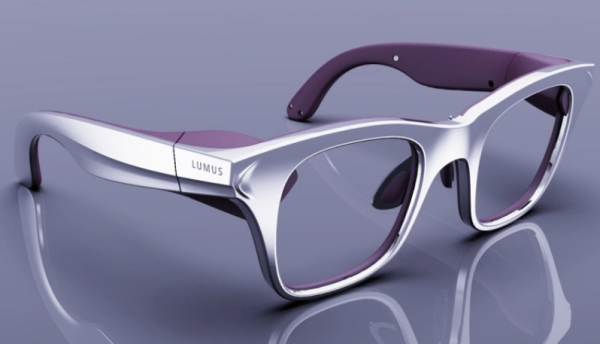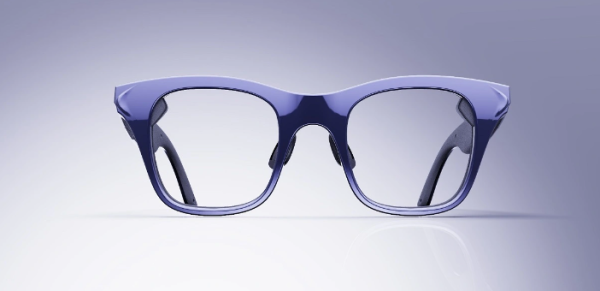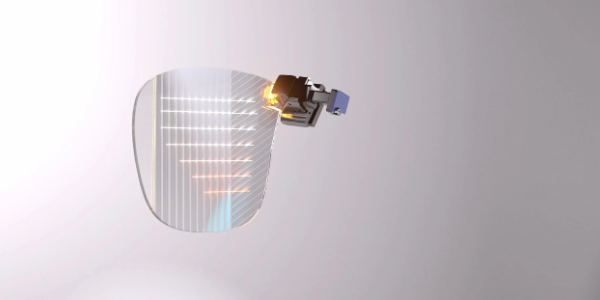Lumus Demoes New Waveguide Designs for Smaller and Lighter AR Glasses
Lumus is an Israeli company that specializes in developing reflective waveguide technology for AR hardware. The company is now showcasing the second-generation technology that will make it possible to develop smaller and lighter augmented reality glasses.
The new Lumus Z-Lens 2D waveguide architecture has been built on the previous generation 2D Maximus. The new waveguide technology will allow for the building of smaller and lighter augmented reality eyeglasses that deliver high resolution image quality and which have outdoor-compatible brightness as well as seamless prescription eye integration. According to the company, the technology could shrink AR modules by up to 50%.

Lumus will showcase the new technology publicly at the CES 2023 in Las Vegas this week. The company is hoping its new waveguide technology will be an augmented reality bridge that will unlock exciting new possibilities in the metaverse.
In a statement, Lumus CEO Ari Grobman stated that AR glasses needed to be “functionally and aesthetically” impressive for them to penetrate the consumer market. The Lumus Z-Lens, he states, aligns “form and function” and eliminates industry barriers of entry thereby paving the way for mainstream consumer adoption of the technology in the near future. Lumus introduced the previous generation waveguide technology, the Maximum 2D reflective waveguide two years ago. The new Z-Lens adds a raft of improvements that Lumus says will unlock the future of AR and take the technology to mainstream consumers.
Major Functionality Inside a Small Form Factor
The new Z-Lens waveguide architecture keeps the high luminance efficiency and impressive image quality. Its predecessor, the Maximus, had the same advantages but the new waveguide technology now has an optical engine that is 50% smaller. The new waveguide architecture also gives glass manufacturers greater flexibility for inserting entrance aperture in a number of positions.
This provides for more compact augmented reality optics to allow for natural-looking glasses that minimize the bulk and weight that has hindered the uptake of many of current AR devices.
Z-Lens features a new and lightweight optical engine with a 2K x 2K resolution and fuller and more vibrant quality for superior image quality. A brightness of 3,000 nits/watt will allow augmented reality glasses to be used in daylight. The smaller form factor also means that the glasses will also be pretty much indistinguishable from ordinary non-AR pairs of glasses thereby eliminating the social stigma that many associates with the current bulkier headsets and mixed reality glasses.

The architecture of the Lumus Z-Lens also enables direct bonding of the optical elements for prescription glasses. This can be licensed and used by its manufacturing partners. This feature will make it possible for users to customize their augmented reality eyeglasses to their vision without grappling with heavy and bulky devices. This will allow AR eyewear to be used as ordinary eyewear.
There are other important advantages such as a small micro-projector, a view of the real world that is distortion-free, and a large field of view. There is also a tenfold increase in battery efficiency, the best for any waveguide in the market. It has negligible forward light leakage.
Grobman says that augmented reality glasses that are natural-looking will unleash the potential of the consumer market and lead to advancements in the industry. Manufacturers have to build aesthetically-appealing AR glasses for mass adoption to be a reality and Lumus believes its Z-Lens waveguide technology makes this possible.

The new bonding functionality in the Z-Lens also enables dynamic focal lens integration which helps in resolving the vergence-accommodation conflict (VAC). The conflict happens when your brain receives mismatching information between the eye’s vergence and accommodation.
The new Z-Lens have also done away with ambient light artifacts which are common in many augmented reality glasses when the optical display elements are hit by small glares of light when you turn off the displays. The Z-Lens wavelength display architecture also puts privacy centerstage by getting rid of light leakage. This completely prevents third parties from viewing whatever the AR glasses wearer is seeing.
In augmented reality glasses, the lenses with the Z-Lens reflective waveguides will serve as the screen upon which the content is displayed. This will come from disparate micro-display technologies such as microLED, laser-based micro-projectors, or LCoS and will be incorporated in the top perimeter corner of every lens cutout.
Lumus’ reflective waveguides feature a series of ‘cascading’ and partially reflective mirrors. Their function is to guide the signal via waveguide into the eyes of the viewer/wearer. These are transflective partial mirrors that vertically and horizontally expand the image quality while still keeping the tiny projector hidden discretely in the temple of the frames of the eyeglass.
The first Lumus Z-Lens prototypes will have a 50-degree field of view. However, the company’s product roadmap is targeting a field of view of up to 80 degrees. The Z-Lens waveguide is insertable into finished products that look the same as the standard eyeglasses.
The Future of Augmented Reality
Lumus says its Z-Lens architecture will play a crucial role in the development of the AR eyeglasses market. This market segment is currently on the cusp of a major spurt of growth as disparate innovative efforts converge.
Grobman says the metaverse is gradually shaping up into reality and AR glasses will be central to the AR experience. He believes that these smart glasses will “transform our society.” The ergonomics of augmented reality glasses, Grobman says, are better than those of smartphones. The AR glasses also offer users novel interaction opportunities in different environments and businesses and assure users of a more seamless experience compared to handheld devices.
Lumus currently has over 430 patents and more than 540 pending patents. It is currently one of the top holders of AR optics patents in the world.
Lumux has built manufacturing processes in conjunction with its supply chain partners like SCHOTT and Quanta Computer Inc. Lumus tech is already key in various existing augmented reality products such as Thales’ full-color head-mounted display Scorpion and the Augmedics xVision system that guides surgeons via AR. It is also used in ThinkReality A6 which was released in 2019 and in ThirdEye’s XR MR Glasses. These partnerships have enabled Lumus to realize the scalabilkity needed for mass manufacturing.
https://virtualrealitytimes.com/2023/01/06/lumus-demoes-new-waveguide-designs-for-smaller-and-lighter-ar-glasses/https://virtualrealitytimes.com/wp-content/uploads/2023/01/Lumus-600x344.pnghttps://virtualrealitytimes.com/wp-content/uploads/2023/01/Lumus-150x90.pngAugmented RealityTechnologyLumus is an Israeli company that specializes in developing reflective waveguide technology for AR hardware. The company is now showcasing the second-generation technology that will make it possible to develop smaller and lighter augmented reality glasses. The new Lumus Z-Lens 2D waveguide architecture has been built on the previous generation...Rob GrantRob Grant[email protected]AuthorVirtual Reality Times - Metaverse & VR
